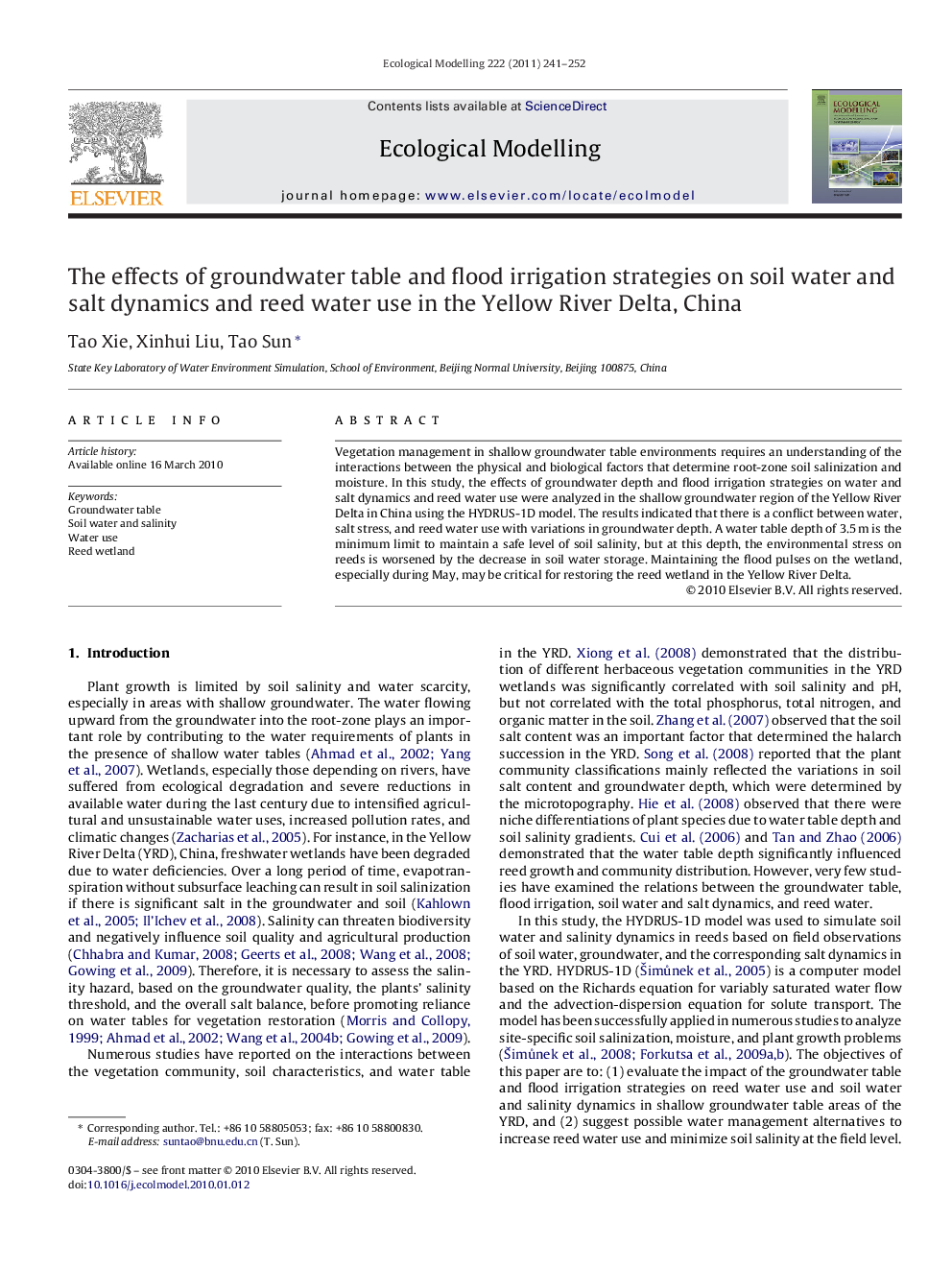| Article ID | Journal | Published Year | Pages | File Type |
|---|---|---|---|---|
| 4377108 | Ecological Modelling | 2011 | 12 Pages |
Vegetation management in shallow groundwater table environments requires an understanding of the interactions between the physical and biological factors that determine root-zone soil salinization and moisture. In this study, the effects of groundwater depth and flood irrigation strategies on water and salt dynamics and reed water use were analyzed in the shallow groundwater region of the Yellow River Delta in China using the HYDRUS-1D model. The results indicated that there is a conflict between water, salt stress, and reed water use with variations in groundwater depth. A water table depth of 3.5 m is the minimum limit to maintain a safe level of soil salinity, but at this depth, the environmental stress on reeds is worsened by the decrease in soil water storage. Maintaining the flood pulses on the wetland, especially during May, may be critical for restoring the reed wetland in the Yellow River Delta.
